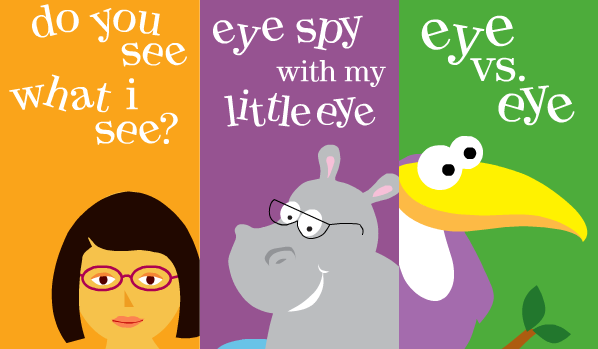Here is a statistic for you:
1 in 5 kids have a vision disorder
Many kids with vision problems just assume their poor vision is normal, because they’ve never experienced anything different. If these vision problems are not checked, they can cause serious long-term effects.
In order to raise awareness of this issue and help identify kids with vision disorders, the British Columbia Association of Optometrists has a campaign called a-b-See™.
Ready for a few more statistics?
- Over 80% of a child’s learning is related to their vision
- 1 in 6 kids are misdiagnosed with a learning disability when they really have a correctable vision problem
What can you do as a parent?
If your child is between 3 and 6 years old, there are games you can play online that will test their hand-eye coordination and observational skills. These games could help you identify potential vision problems. If you suspect any problems, definitely take your child to an Optometrist for an eye exam.
Here are some of the games:
“Do you see what I see” shows kids how we all see the world through different eyes.
1. “Do you see what I see” shows kids how we all see the world through different eyes.
2. “Eye spy with my little eye” is a matching game that tests your child’s visual perception.
3. “Eye vs. eye” is a game that tests the differences between both of your child’s eyes.
Finally, know the common warning signs of vision disorders in children, and take your child to an Optometrist as soon as you see any warning signs — as that is the only way to truly know whether there is a problem. Warning signs for vision problems include: sitting close to the TV, holding objects too closely, avoiding near-distance activities (e.g. puzzles, books, colouring), covering an eye while looking at something up close, lack of concentration, excessive blinking or rubbing of eyes, inability to do eye-hand coordination activities (e.g. catching, building, balancing), and many more. Learn more about symptoms and the importance of understanding your child’s eyesight in this guide. Routine eye exams can be done as early as 6 months of age. And regardless of whether you see any signs, all kids should have their first eye exam by 3 years of age.
The information in this blog post comes from the British Columbia Association of Optometrists.
By Dr. Nazima Sangha of Family Eyecare Centre


